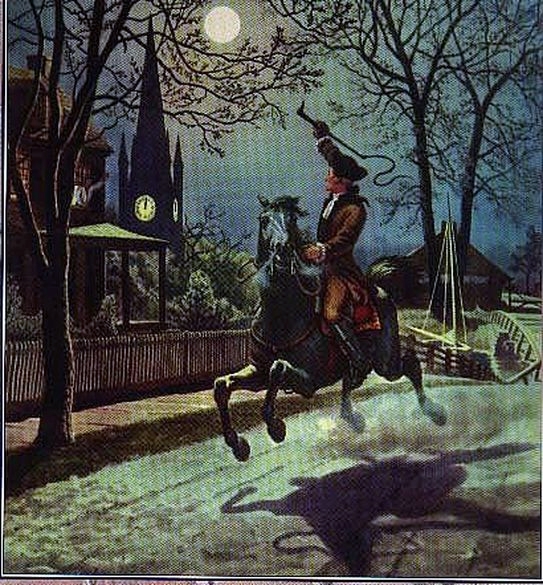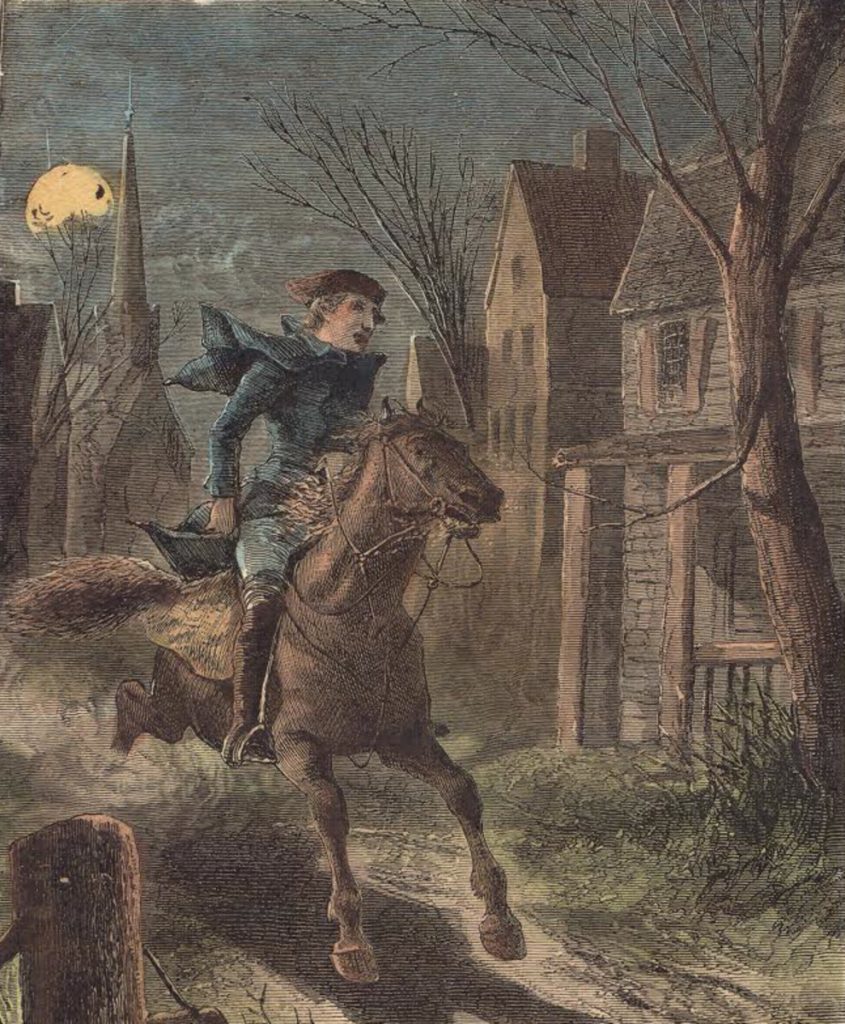
Most Americans are familiar with the poem, “Paul Revere’s Ride” by Henry Wadsworth Longfellow. However, that’s not the full story. Or even a very accurate telling of the story.
Paul Revere’s ride took place during the evening of April 18-19, 1775. By this point, due to assaults from the British and the Loyalists, many Patriots had taken to hiding out in outlying villages. Paul Revere, however, remained in Boston, where he went about his daily life, keeping an eye on the soldiers, but mostly trying to remain inconspicuous.
By mid-April, Revere had begun to take notice of British ships coming into harbor. He’d also began picking up tidbits of a forthcoming raid. It’s possible that his source was General Gage’s wife, a women who loved her country. So, on the 16th, he travelled to Concord, the temporary home of Congress and the storehouse for militia weapons.
It was on his return home to Boston, that Revere met with fellow Patriots in Charlestown, where they planned to “provide notice” once the British started for Concord, alerting them to which course the British followed.

There was no guarantee that Revere or the other Patriots stationed in Boston would be able to escape in time, so a plan of action needed to be agreed upon. Thus, it was decided that the signal would be placed in the tower of the Old North Church. “One if by land, two if by sea.”
Then, on the night of April 18th, Revere received word from a local stable boy that the British were on the move. They were preparing boats to cross the Charles. Two if by sea.
At around 10, Joseph Warren relayed the warning to Sam Adams and John Hancock, both destined for the gallows should the British regulars ever catch up with them. He sent William Dawes, a young shoemaker, on the land route, through Roxbury, Brookline, and Cambridge. Meanwhile, Revere took the water route.
But on the opposite shore, Revere’s path nearly collided with two soldiers of the British army, and he was forced to alter his route to the north by two miles. But this was hardly the end of his bad luck. He pressed on, though, on to Lexington, where he met with Adams and Hancock at the home Jonas Clark. Eventually joined by William Dawes and the third rider, Dr. Samuel Prescott, the three riders set out for Concord. Of the three, only Prescott, with a vast knowledge of the countryside, reached Concord. During his journey, Dawes was thrown from his horse and captured by the British. Revere, also captured, used his interrogation time to inflate the numbers the Patriots had waiting for the British.
Revere was later released, and while heading back to Boston, heard the striking contrast church bills ring out and shots being fired, giving a good indication that they’d warned the Sons of Liberty in time. Sure enough, as Revere was fleeing Lexington with important papers in tow, he rode past militiamen, lining up for the opening struggle for American Independence.
